#pagan wedding
Text
Pagan Wedding Flowers (and other plants) Cheat Sheet

Flowers have been associated with weddings for almost as long as humans have been getting married. In fact, the use of flowers in ritual may actually be older than humans! Neanderthal graves in Iraq suggest that Neanderthals buried their dead with flowers. There are mentions of flowers in our earliest recorded accounts of weddings, such as in Egypt, Greece, and Rome.
Historically, couples would have used whatever flowers were available to them. While some cultures had flowers they preferred for weddings because of their symbolism, couples would have been limited by what grew in their area and by what was in bloom at the time of their ceremony. To be truly as historically accurate as possible, consider using flowers you grew or foraged yourself. Bonus points for native blooms!
For those who aren't into growing or gathering your own wedding flowers, modern florists and greenhouses allow us to choose from a wide range of flowers, many of which aren't native to our homes. This makes it much easier to choose flowers based on their symbolism, history, or cultural meaning.
Historic Wedding Flowers + Plants
Roses have been the flower of choice for Western weddings pretty much forever, and with good reason. The rose is associated with several ancient goddesses of sex, fertility, and/or romance, such as Inanna, Ishtar, Aphrodite, and Venus. (Later, medieval Christians would also associate this flower with the Virgin Mary.) Including the goddess's flowers in a wedding may have been a way of invoking her blessing on the union. Sappho called rose "Queen of the Flowers."
Roses are held in a high regard in pretty much every culture with access to them. They're strongly associated not only with love, but also with beauty, wholeness, blessings, and even spirituality.
Rose was included in wedding celebrations in Ancient Hellos (Greece) and Rome. It is associated with the planet Venus and the water element.
Wheat was also a popular inclusion in weddings in ancient Greece and Rome. Hellenic brides would carry sheaths of wheat or another grain to invoke fertility and good fortune. Wheat was strongly associated with agrarian goddesses like Demeter, Persephone, Ceres, and Proserpina. Carrying wheat may also have been a way of expressing a wish for the marriage to produce many children. Pliny the Elder explicitly says in his Natural History that wheat was included in weddings to honor Ceres.
In modern occult systems, wheat is associated with fertility, the conception of children, and wealth. It is associated with the planet Venus and the element of earth.
Olive branches also featured in Hellenic weddings. Olive was an important crop in the ancient Mediterranean, and olive branches were a symbol of peace and friendship. Olive was also used in the victors' crowns in the Olympic Games. In Athens, the olive tree was a symbol of Athena. It was also carried by worshipers of Apollo when they visited the Oracle at Delphi. Olive was also important to the Romans, who associated it with Mars in his aspect as a protector of peace.
In modern magic traditions, olive is associated with beauty, healing, stamina, wealth, fertility, protection and of course, peace. It is associated with the sun and the fire element.
Orange blossoms were included in Hellenic weddings as a sign of happiness. These strongly scented white flowers also sometimes appeared in Roman weddings. Thousands of years later, Queen Victoria wore a crown of orange blossoms at her wedding, but for her they were a symbol of chastity.
In modern systems, orange is associated with joy, partnership, sweetness, and good luck. It is associated with the sun and the fire element.
Hawthorn appeared in weddings in ancient Rome. Pliny the Elder said that Roman bridal processions included a hawthorn torch dedicated to the goddess Ceres. In Rome, hawthorn was more generally associated with love and good luck.
In Celtic cultures, especially Ireland, hawthorn was believed to be a fairy tree. For this reason, cutting a hawthorn tree or bringing hawthorn branches inside was considered bad luck.
The blooming of hawthorn trees was used to determine the date of Bealtaine, and hawthorn boughs were often decorated with flowers, ribbons, and egg shells to make a May bush, which was placed by the front door for good luck. In Britain, hawthorn wood was used to carve maypoles. Hawthorn flowers may be especially appropriate for a May wedding or handfasting.
In modern occultism, hawthorn is associated with protection, healing (especially healing the heart), romantic love, fertility, granting wishes, and happiness. It is still strongly associated with weddings and marriage. It is associated with the planet Mars and the fire element.
Lotus may have featured in ancient Kemetic (Egyptian) weddings. The lotus was an important symbol in Kemetic religion, and was associated with the sun, rebirth, and the creation of the world. Lotus flowers featured in festivals to honor Hapi, the androgynous god of the Nile. The lotus is used in art to represent Upper Egypt. An Egyptian poem from 1100 BCE connects the lotus to marriage.
Lotus flowers were also popular in ancient Chinese weddings, and they're still used by some Chinese couples today. In Chinese culture, lotus represents purity, honor, and long life.
In modern traditions, lotus is associated with protection, spirituality, and blessings. It is associated with the moon and the water element.
Yellow flowers were used in pre-Christian Ireland for blessings and protection. The exact flower used for these rituals is not specified, so it seems like the color was what mattered. Modern pagans looking to carry on this tradition have lots of yellow flowers to choose from. Some popular choices include yellow roses (see above), yellow amaryllis (associated with creativity, playfulness, and joy), chrysanthemum (associated with long life, optimism, and protection), marigold (associated with happiness, rebirth, and vitality), and/or daffodils (associated with love, fertility, and luck).
Modern Wedding Flowers
We've gone over some of the flowers that were popular in historic pagan weddings, but it's also easy to pagan-ify the flowers that are most popular in modern weddings. Here's a quick rundown of some popular wedding blooms and their neopagan and occult symbolism:
Peony is associated with purification, healing, prosperity, and success. In ancient Rome, peony was believed to be sacred to Mars. It is associated with the sun and the fire element.
Dahlia is associated with mystery, occult wisdom, and transformation. It is associated with the moon and the water element.
Lilac is associated with balance, peace, romance, protection from evil, and attracting friendly spirits. It is associated with Venus and the water element.
Sweet Pea is associated with comfort, charm, and sweetness. It is associated with Venus and the water element.
Hydrangea is associated with healthy boundaries, breaking negative patterns, hex breaking, and protection. It is associated with water and with both the moon and Neptune.
Tulip is associated with beauty, desire, gratitude, love, prosperity, and simplicity. It is associated with Venus and the earth element.
Orchid is associated with beauty, elegance, sexuality, fertility, and romance. It is associated with Venus and the water element.
Lily is associated with spirituality, beauty, harmony, and protection from the evil eye. It is associated with Venus and the water element.
Carnation is associated with beauty, love, rebirth, strength, and healing. Carnations are associated with same-gender love and especially love between men because of Oscar Wilde's fondness for them. They are associated with the sun and the fire element.
Gardenia is associated with love, peace, healing, and spirituality. It is associated with the moon and the water element.
Resources:
"New Neanderthal remains associated with the ‘flower burial’ at Shanidar Cave," Cambridge University Press
"History of Wedding Flowers" by Benna Crawford
The Roman Wedding by Karen K. Hersch
"The Olive in the Ancient Mediterranean" by Mark Cartwright
"The History, Mythology, and Offerings of Hawthorn" by Meghan Pivarnik
Where the Hawthorn Grows by Morgan Daimler
Temple of the Cosmos by Jeremy Naydler
The Magic of Flowers by Tess Whitehurst
The Magic of Trees by Tess Whitehurst (see my disclaimer about Whitehurst's books, but these are some of her better ones)
Cunningham's Encyclopedia of Magical Herbs by Scott Cunningham
#the great handfasting project#handfasting#pagan wedding#wedding magic#queer wedding#pagan#paganism#pagan witch#hellenic polytheism#hellenism#religio romana#cultus deorum#roman polytheism#kemetic paganism#kemetic polytheism#irish paganism#irish pagan#irish folklore#wicca#wiccan#flowers#flower magic#correspondences#love magic#love spell#green witchcraft#green witch#witch#witchblr#witchcraft
502 notes
·
View notes
Text
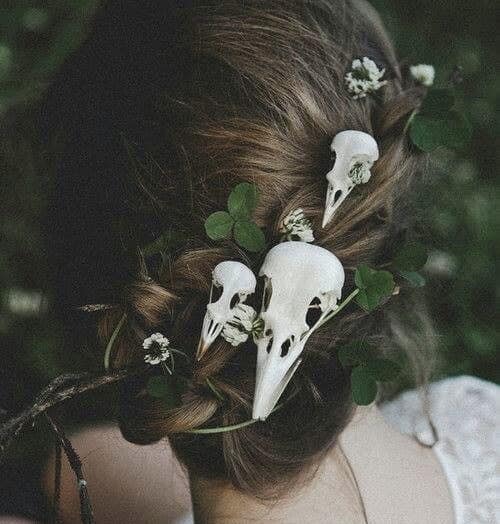
🖤Dark wedding hairystyle inspo🖤
#paganblr#pagan witch#dark wedding#witchy wedding#pagan wedding#dark cottagecore#goblincore#witch hairstyle#forestcore#naturecore#witchblr#forest witch#wedding#goth wedding#goth aesthetic
12 notes
·
View notes
Text
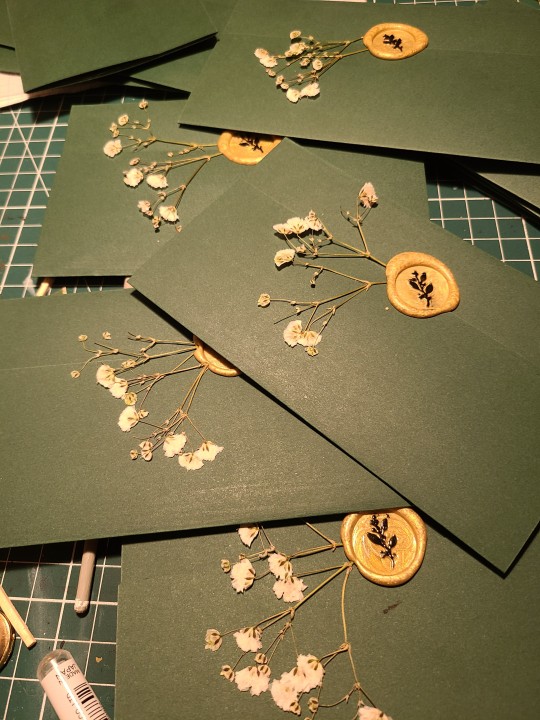
All of my linocut wedding invites are finally done and ready to ship, with only 3 months of delay😎

I'm quite proud of myself!
#aesthetic#diy#linoprint#linocut#wedding#weddinginspiration#wedding invitations#linogravure#handmade#i made this#pagan wedding#pagan artist
11 notes
·
View notes
Text
Someone: why are you crying?
Me who's been looking at lesbian pagan wedding photos all day on Pinterest: just life you know
#i want a rainbow handfasting chord#i wanna jump the broom with my wife in amazing dresses#they're so beautiful#pls I'm crying#lesbian#actual lesbians#agender lesbian#lesbian memes#pagan witch#pagan#paganblr#pagan wedding#witchblr#witch#witchcraft#paganism#hellenic pagan#hellenic witch#witch memes
109 notes
·
View notes
Text

#dark wedding#whimsigoth wedding#whimsigothic wedding#witchy wedding#witchy vibes#pagan wedding#wedding ideas#wedding photography#wedding inspiration
89 notes
·
View notes
Photo
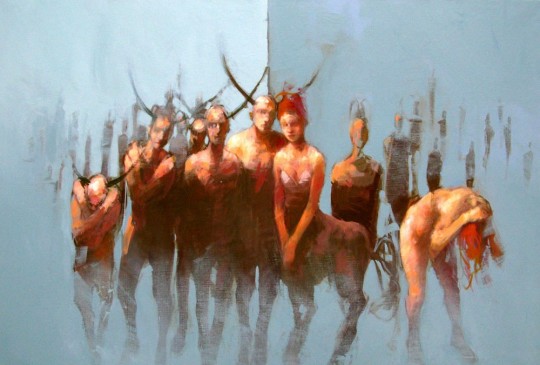
Olivier Massebeuf, The pagan wedding (acrylic, 2022)
from here
13 notes
·
View notes
Text
Me, thinking about my beautiful outdoor pagan as fuck handfasting with the intention of changing my both first and last name: 💒💞💓💖🌙 ✨
Me thinking about the brewing nightmare that both money and family are going to be no matter how it shakes out: 😰🤢😪☠️🤕🥸
#pagan wedding#pagan handfasting#wedding#getting married#engaged#anyway here’s wonderwall#anyway here’s a text post#I got a wedding to destroy all straights lol
5 notes
·
View notes
Text
Dissecting ancient Greek wedding customs (or “How to adapt the clusterfuck they are into something somewhat doable for the 21st century”)
This post is going to be a bit different. I could stick to writing about the customs we know of from a purely historical perspective, and while it would be informative, it wouldn’t reflect what I’ve actually been up to. Some of you might already know, but I’m getting married, so I approached this topic with the intent of seeing what I could do (and get away with).
So this post is going to be more about method and the practical challenges that come with doing the groundwork of adapting very old (and often outdated) traditions in a way that makes sense for our modern times.
I do have some disclaimers to make before I get started:
Most (if not all) of the literature around ancient Greek marriage is hetero-normative. However, this does NOT mean that marriage rites shouldn’t be adapted for queer marriages or that queer marriages can’t be done within Hellenic paganism. It’s our job as reconstructionists and revivalists to rework and adapt to our needs.
Similarly, this post is bound to mention or detail cult practices that are no longer in line with our modern sensibilities. I also want to make it clear that this post is not a tutorial. I’m not saying how things should be done, I’m only exposing elements that I consider reworkable and propose suggestions so that it can help others make their own research and decisions, with the level of historicity that they deem fit.
While the wedding customs from fifth century BC Athens are decently known, the ones from other cities and regions of Greece are much more obscure outside of anecdotal and fragmentary details (with the exception of Sparta). For this reason, the Athenian example is what I’ll be using as foundation. If you reconstruct practices from other areas of the Greek World, you might find something valuable in this article: The Greek Wedding Outside of Athens and Sparta: The Evidence from Ancient Texts by Katia Margariti.
Basic/simplified structure
The typical Athenian wedding would spread over three days, and be marked by several steps, some of which are listed below. Note that the order of these steps is not precisely known and might have been flexible:
Pre-wedding:
Decorating: korythale at the door, decoration of the nuptial bedroom
The Proteleia
Filling of the loutrophoros
Wedding day
Nuptial bath
Adornment of the bride
Wedding Feast
Hymenaios
Anakalypteria
Nymphagogia
Katachysmata
Day after
Epaulia
Gamelia
Final sacrifices
Some of these steps included specific customs and traditions, not all of which are reconstructible for various reasons.
Decorations
The korythale: the korythale was a sprig, usually from an olive tree (or laurel), which was placed at the groom’s door (and perhaps the bride’s too). The word in interpreted as deriving from “koros” and “thallein”, which would translate “youth-blossom”.
The korythale is very reminiscent of the eiresione, which was a similar kind of branch of laurel used during the Thargelia and/or the Pyanepsia that had apotropaic purposes. Athenian weddings included a procession from the bride’s home to the groom’s house, so the presence of the korythale at the doors would indicate that a wedding was taking place involving the decorated homes.
While I haven’t seen any one make this interpretation, I would still be tempted to argue that decorating the thresholds of houses has a similar protective and luck-bringing purpose than the eiresione, which was also hung above the door of Athenian houses.
The thalamos (nuptial bedroom): While there is no doubt the houses were properly decorated for the occasion, we have mention of special care given to the nuptial bedroom.
It’s important to understand that the procession from the bride’s house to the groom’s went up to the bedroom door, it was generally an important location and its preparation is seen represented on ancient pottery. Euripides mentions the adornment of the bed with fine fabrics, while Theocritus mentions the smell of myrrh (sacred to Aphrodite). There is also evidence that, in the Imperial period, the practice of hanging curtains to create a canopy above the bed was adopted, very likely from Egypt.
When it comes to adapting this today, it is pretty straightforward and there is plenty of room for personalization. The korythale could be challenging depending on how easily available olive or laurel are in your area. I would also argue that the custom could be more loosely adapted so that instead of being at the houses’ doors, it could take the form of a floral arrangement at the door of whatever venue you are using.
Proteleia
In short, the proteleia refers to sacrifices and offerings that would be made to various gods before the wedding. The exact timing of these is more or less unknown, but we have reasons to believe they could be done a day or a few days before the wedding, and perhaps also on the day of the wedding. These offerings were made independently by each family.
It is in this context that the offering of a lock of hair and of childhood items is best known for brides. The recipients of the offerings are varied: In Athens the most mentioned are the Nymphs and Artemis, but various sacrifices to Aphrodite, Hera, Athena and Zeus were also performed. In other parts of Greece, pre-nuptial customs often included sacrifices to local heroines. Plutarch, in the 2nd century AD (and therefore way after the focus of this post) mentions the main five nuptial deities to be Zeus Teleios, Hera Teleia, Aphrodite, Peitho and Artemis.
Today, I believe the exact choice of who to offer to and what to offer very much comes down to personal preferences and circumstances. While we assume that both families made prenuptial sacrifices, we know very little of the groom’s side of things, since the focus was on the bride, and the rite of passage aspect was not present for the groom in Ancient times. This is a gap that leaves room for modern innovation eg. including Apollon to either replace or accompany Artemis or choosing a group of deities that is more couple-centric rather than family-centric.
Personally, I have settled on Aphrodite, Hera and Artemis and have integrated a Spartan custom that includes the mother of the bride in the sacrifice to Aphrodite. Hera Teleia will receive a lock of my current hair, while Artemis will receive a lock of hair from my first haircut as a child (that my mother has kept all these years), alongside some other trinkets. The groom will honour Zeus Teleios in a passive way. And I will honour the Nymphs through the the rite I will explain next.
Nuptial baths
Both bride and groom had a ritual bath before the wedding. Its purpose was of cleansing and purificatory nature, and is consistent with other water-based pre-sacrifice purifications. What made the bride and groom's baths distinctive was their preparation. The bath water used to be drawn at a specific spring or river. At Athens, the water for bridal baths came from the Enneakrounos, the fountain house for the spring Kallirrhoe, but each city had its dedicated source. The water was carried in a special vase named the loutrophoros (bathcarrier) and the act of fetching the water and bringing it back to the homes constituted a procession. The loutrophoros was often given as offering to the altar of the Nymphs after the wedding. It was an important symbol of marriage, to the point that, if a woman died before being married, she would often be buried with a loutrophoros.
This will be more or less difficult to adapt depending on circumstances and environment, but the logic of a purifying bath (or shower even) can be kept (though I would discourage bathing in water you are not sure of the cleanliness of). The idea of having a specific vessel can also be kept. Personally, I plan to have a special vessel for some type of purified water, and while I may not bathe in it, I plan to sprinkle it and/or wash my hands with it.

Adornment of the bride (and groom)
Traditionally, the bride would have a nympheutria (which we could equate as a bridesmaid, but seems to have often been a female relative) charged of helping the bride get ready. I won’t get into the details of the clothing we know about, mostly because there seems to be a lot of variation, and because I consider this to be a very personal choice. However, we can note that both groom and bride were adorned with a wreath or a garland of plants that were considered to have powers appropriate for the occasion (sesame, mint, plants that were generally considered fertile or aphrodisiac). Perfume is also something attested for both bride and groom, especially the scent of myrrh. The bride would wear a crown, the stephane, which could be made out of metal or be vegetal (the stephane is now the object of its own crowning ceremony in Greek Orthodox weddings). The bride’s shoes were also particular for the event, and named nymphides. The bride’s veil was placed above the crown.
Hymenaios and Feast
I am grouping these two since they are linked. The feast was more or less the peak of the wedding ceremony and lively with music and dances, as Plutarch indicates (Moralia, [Quaest. conv.] 666f-67a):
But a wedding feast is given away by the loud cries of the Hymenaios and the torch and the pipes, things that Homer says are admired and watched even by women who stand at their doors.
The hymenaios was a sung hymn in honour of the couple and the wedding, and there were other songs that were specifically sung at weddings. However the hymenaios wasn’t only for the feast, these songs would be sung also during the processions. The hymenaios also had the purpose of ritually blessing the couple, a ritual that bore the name of makarismos.
As for the feast, it was obviously abundant with food and the prenuptial sacrifices provided the meat that would be served. There is otherwise very little difference with what a modern wedding feast would be like: food, drink, music and dance around which gathered friends and relatives of the couple. Like today, the wedding cake(s) was an important part of the celebration. It was called sesame and consisted of sesame seeds, ground and mixed with honey and formed into cakes to be shared with the guests.
Anakalypteria
Note that there is a bit of a debate around this step, which is the unveiling of the bride. Some believe the bride kept her face veiled until this part of the wedding, where her face would be uncovered for the groom to see. Others interpret this step the other way around, where the bride is then veiled as a result of being now married. The timing of the unveiling is also up for the debate. It might have been during the feast (at nightfall), or after once the couple was escorted to the bridal chamber. There doesn’t seem to be a clear consensus.
The concept of unveiling the bride is otherwise something that isn’t unknown to us as a modern audience. As with everything else, how to interpret and modernize it is up to personal preference.
Nymphagogia and Katachysmata
The nymphagogia aka the act of “leading the bride to her new home” took place at night, likely after the feast. It is at this point that the groom ritually led the bride to his home by taking her by the wrist in a ritual gesture known as χεῖρ’ ἐπὶ καρπῷ (cheir’ epi karpo). The relatives and friends of the couple formed a festive procession that accompanied them to their new home accompanied by music and songs. The mother of the bride led the procession carrying lit torches, while the groom’s mother awaited for the new couple in their home, also bearing lit torches.
Once there, the rite of the katachysmata would happen. The couple would be sat near the hearth and the guests would pour dried fruits, figs and nuts over the bride and groom as a way to incorporate them into the household and bless the union with prosperity and fertility. As part of this rite, the bride ate a fruit (either an apple, quince or pomegranate). It is only after this step that the couple would be escorted to the bridal chamber.
These two rites are tricky to adapt in a modern context because of how location-specific they are (and that’s not even taking into account the implications of having family escort you to your bedroom etc). My take would be that the katachysmata is not too far off from the custom of throwing rice/flowers at the couple after the ceremony, and could probably be incorporated as such. The torches could also be replaced by any source of light placed in a meaningful location, depending on the where the wedding is being held. The nymphagogia could also do with an update, the easiest of which could simply be holding hands while leaving the wedding ceremony.
The day after (Epaulia, Gamelia & sacrifice)
The epaulia refers to wedding gifts to the couple, which would be given the day following the ceremony. At this point, it is implied that the couple has consummated their marriage and are officially newly-weds. Pausanias informs us that the term “epaulia” (also?) refers to the gifts brought by the bride’s father in particular and included the dowry.
After the epaulia, the bride's incorporation into her husband's house was complete. This might have been when the groom held a feast for his phratria (aka direct family), as a way to conclude the wedding.
As for final sacrifices, the bride herself may have marked the end of her wedding by dedicating her loutrophoros at the sanctuary of Nymphe, south of the Acropolis.
The epaulia could be adapted, in modern terms, with having a registry. Should someone choose to have a specific vessel linked to the ritual bath today, it could very well be kept, dedicated to the Nymphs and used as a small shrine. Considering how symbolic the object is, there is also room for it to become a piece of family heirloom.
Final words
This is really only a small summary of what a wedding could have looked like, sprinkled with a few ideas of how to manage the gaps, discrepancies and limitations. As I said in my introductions, there are details I haven’t mentioned. Some of the customs detailed here have clear modern counterparts, but others don’t. I’d like to conclude by addressing these.
First, the ancient Greek (Athenian) wedding is completely devoid of priestly participation. It was entirely planned, organized and led by the two families. Religious responsibilities were entirely self-managed. I find this point important to remember because it makes it much more accessible than if modern Hellenic pagans had to seek out an external authority.
Some of you might have noticed the absence of wedding vows, at least in a formal form like the one we are used to in our modern days (derived from Christian and Jewish traditions), this is not an oversight, there simply were none that we know of. As a sidenote, I would also advise against turning a wedding vow into a formal oath. I’m still debating on what to do myself, but I’m leaning towards a religiously non-binding vow that won’t curse me should things go wrong.
Adapting the structures and rites of the ancient wedding to today’s framework of ceremony will naturally lead to changing the order of things, on top of sacrificing elements for the sake of simplicity, practicality, personal preferences and, very likely, visibility. Unless you’re lucky enough to do a private elopement, chances are that relatives and friends might be there, and not all might know or even approve of your faith. I hope this post shows that there can be ways to include traditional religious elements that will go unnoticed to the untrained eye, like I hope it showed that the private nature of the ancient Greek wedding rites is a significant advantage for modernization.
#hellenic polytheism#hellenic paganism#hellenic pagan#heradeity#greek history#ancient greece#zeus deity#aphrodite deity#artemis deity#hellenic reconstructionism#wedding rites
739 notes
·
View notes
Text
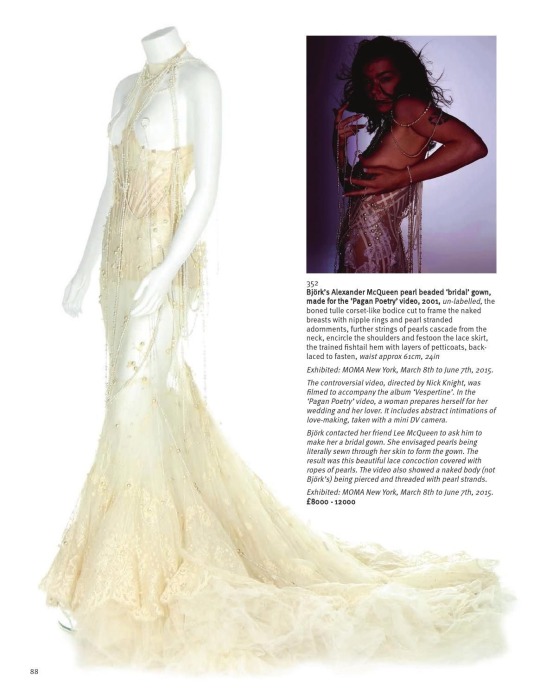
Pearl beaded bridal gown by Alexander McQueen worn by Björk Guõmundsdóttir in her ‘Pagan Poetry’ music video (2001)
#pagan poetry#bjork#bjork fashion#bjork gudmundsdottir#costume#alexander mcqueen#fashion#couture#music video#dress#bridal#gown#pearls#high fashion#haute couture#wedding#wedding aesthetic#angel#angelcore#angel aesthetic#y2k aesthetic#y2k#2000s fashion#2000s couture#00s fashion#bridal aesthetic#aesthetic
1K notes
·
View notes
Text
I had fun making this. It's hammered and oxidised copper, cleaned and polished with a sapphire crystal navette.
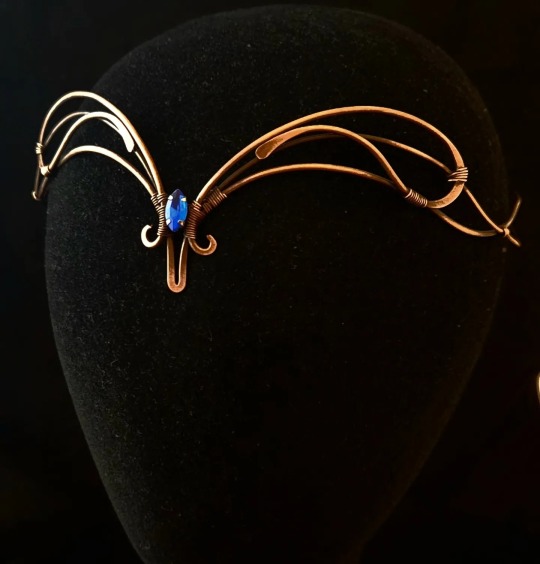

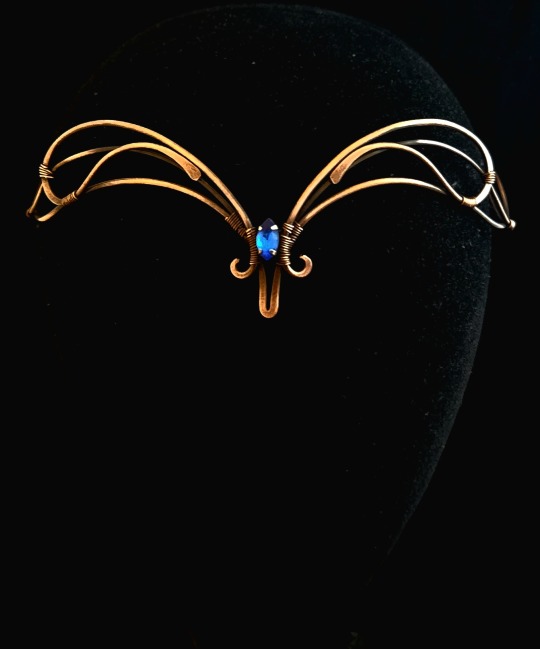
#handmade#tiara#circlet#elven#celtic#elven jewelry#pagan#larp#copper headpiece#crown#wedding#jewelry handmade#handfasting#bridal tiara#medieval cosplay#medieval dress#copper jewelry#sapphire#birthstone#ren faire#bohojewelry#witchyvibes#cosplay#bridal headpiece
802 notes
·
View notes
Text
Valyrian Wedding Rituals & Its Parallels
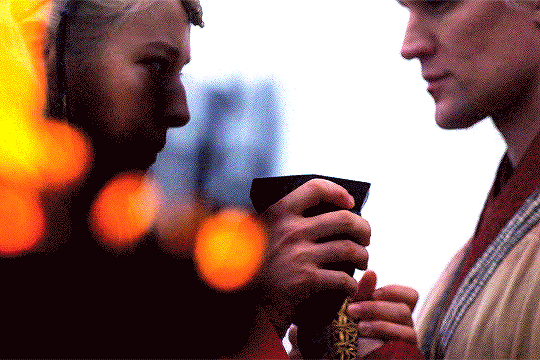





“Among the people who came to inhabit Northumbria and the Lothians, as well as among other Germanic peoples, the nuptials were completed in two distinct phases. (…) The parties plighted their troth and the contract was sealed, like any other contract, by a hand-shake. This joining of hands was called handfæstung in Anglo-Saxon, and the same word is found in different forms in the German, Swedish and Danish languages. In each it means a pledge by the giving of the hand.”
Handfasting' in Scotland - The Scottish Historical Review; Anton, A. E. (1958)
“In ancient Rome, a wedding was a sacred ritual involving many religious practices. (…) In a Roman wedding both sexes had to wear specific clothing. Men had to wear the toga virilis while the bride to wear a wreath, a veil, and a yellow hairnet.”
Women's Costume and Feminine Civic Morality in Augustan Rome; Sebesta, Judith Lynn (1997)
“ When the terms of the ketubah were accepted a cup of wine was shared to seal the marriage covenant. (…) The bride and groom shared the same cup, symbolizing the shared life that would be theirs. (…) Wine in Judaism has always symbolized joy. (…) Wine also symbolized blood. The marriage covenant is a blood covenant in the eyes of God. Two lives become one in a lifelong commitment.”
The Ancient Jewish Wedding; Lash, Jamie (2012)
#daemon targaryen#daemon x rhaenyra#daemyra#hotd#fantasy#game of thrones#rhaenyra targaryen#house of the dragon#house targaryen#asoiaf#wedding vows#old valyria#ancient rome#roman empire#roman history#jewish history#judaism#jewish culture#celtic paganism#scottish
208 notes
·
View notes
Text
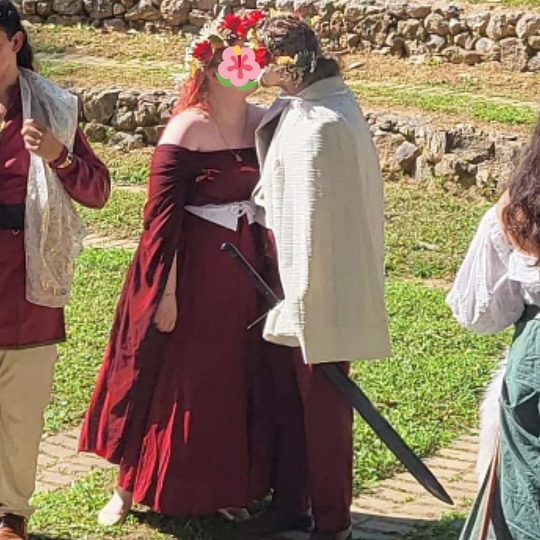
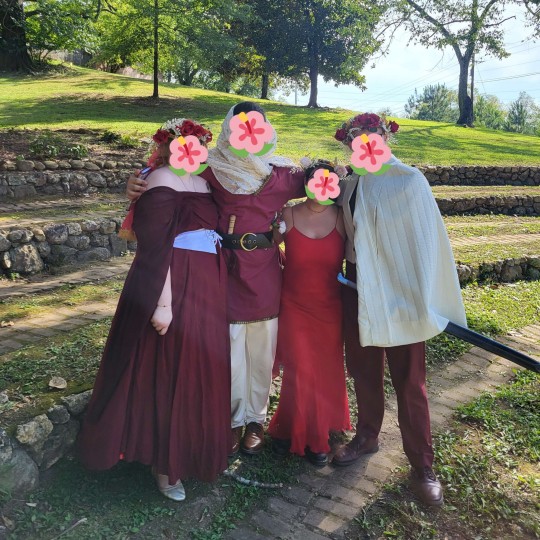
On Lughnasa (August 1st), 2023, under a full moon in Aquarius, my partner and I got married in a handfasting ceremony.
We designed this ceremony from scratch ourselves, incorporating elements from our own faiths. My personal practice is a mix of Heathenry and Reclaiming (and, ngl, is heavily influenced by Wicca) and my now-husband is Roman pagan. We also both have Irish American heritage that is important to our families, which is why we chose to incorporate historic Irish elements.
And our boyfriend was our officiant!
#the great handfasting project#handfasting#wedding#pagan wedding#heathenry#heathen#inclusive heathenry#reclaiming#reclaiming witch#irish polytheism#irish paganism#religio romana#roman paganism#roman polytheism#polyamory#queer#queer wedding#mine#personal
59 notes
·
View notes
Text


A garden fairies wedding cake 💫
#cottagecore#cottage aesthetic#folkcore#green witch#forestcore#fairycore#fairy aesthetic#naturecore#hedge witch#witchcore#pagan#wedding cake#wedding
142 notes
·
View notes
Text
Never In A Thousand Years

Summary: Camille's first night in Kattegat is spent in argument and stress, she's prepped for the wedding, Ivar and Camille are wed.
Warnings: stress, fluff
Sorry for the long wait, took me longer to finish up and this chapter is sort of long 👀
Chapter Three
I promised Ivar I would tell him what Margretthe had told me after the feast, he worried so much that he dragged me away early. I sat on the bed, watching him nervously as he stood in front of me.
"Now tell me. What did Margretthe tell you." His eyes glowed blue, bluer than I'd ever seen them. I shook my head, "Ivar when I tell you, you must know that I do not believe her!"
I pleaded for him to at least calm down or prepare to not be angry with me. He grunted, looked away and shook his head. "Just tell me woman." His tone was lighter, more begging than demanding.
I swallowed, my eye lids fluttering as I blinked and I took a deep breath. "She told me you were unable to have sex." I whispered, drawing my eyes away from his and staring down at my hands.
After I told him, he stomped into the dark room with the small cot inside. I did not see him when I woke up, I had not changed out of my dress when I fell asleep.
I looked down at the ruffled dress, cursing myself for sleeping in it. Because Ivar was gone, I assumed he wouldn't have a dress for me to wear so I put on one of mine from England.
The men from the boat had brought my chest to Ivar's home last night during the feast, I smiled to myself as I pulled out one of my red dresses. It was simpler than my others and I wouldn't mind if it got dirty.
It still had not registered in my brain the seriousness of my situation, my thoughts on being married to a violent man for the rest of my life were calm and I don't think I know how to react to it yet.
I had my hand on the door when I froze, remembering the only two people who knew my language were both individuals that I did not want to be near. Margretthe's message still confused me.
She seemed sort of happy that I was aware of it now, but I still do not believe it to be true. Ivar had called her a whore, it shocked me he would use such words for his brother's wife.
I know Ubbe respected me, he seemed sad that I would have to marry Ivar, "You're loss of innocence", is what my sister cried to me about. She valued her fair sister above all else and she made sure I knew that.
A knock on the door brought me away from my thoughts, and I was still standing next to the door when it sounded. I cracked the door, then opened it fully when I saw it was Lagertha and Torvi with a few other women. They gave me warm smiles and beckoned me out to follow them.
Again with the broken French, "Prepare... Wedding." Where the only real words Lagertha said, I smiled, my brows furrowed in confusion before I nodded my head, smiling.
I shut the door behind me, Lagertha pulled on my arm, holding me close next to her. I dreaded not knowing her language, I had a month to learn or at least try but I insisted it would be fine. As if a language barrier wouldn't cause any problems.
I kept my eyes down as we walked through the muddied town, various townspeople staring openly as the shield maidens escorted me. A few times I looked up, only to be met with the narrowed eyes of Vikings.
I had no idea what the standards were for a pagan wedding, no doubt much different than a Christian wedding. For example; a cross, a priest, anointing, and reciting prayers.
I dodged puddles of mud and followed the queen up the steps of a small home near the woods. The door creaked open and the translator was inside, a different one though.
Ragnar had brought this man to Paris with him, and this wanderer explained that he was neutral. Now that this odd looking man was back in Kattegat, he was being put back into use by translating.
I took a seat in front of his and the shield maidens remained outside except for Lagertha. There were a few other women entering the room from a separate room. They had red paint on their faces and black chalk surrounding their eyes.
One woman was holding a dress, pure white with a halo of twigs and flowers placed on top of it. Lagertha said something, gesturing to the dress and then looking at the translator. I looked at him expectantly.
"They are going to clean and dress you now." He said and I stood up, the queen guiding me to a room. The room had a metal tub off to the side and steam slowly rose to the ceiling. I looked around awkwardly as they waited for me to remove my dress and shoes.
The only two women that have ever bathed me were my mother and my old maid who I made stop when I turned fifteen so you can imagine my surprise when the painted women went to work scrubbing me completely.
I finally pushed them away when they insisted on rag drying my entire body and did it myself in private thanks to a curtain. The dress was slid onto me and they stitched the parts that were too loose.
I had no garments underneath which I thought was completely absurd, the feeling of being completely naked under a dress did not make me feel comfortable to say the least.
They sat me on a stool and stood around me with bowls or string and began putting my hair in braids, drawing runes in a line from my bottom lip to my chin. My brown hair was strung up in several intricate designs and knots.
They smudged black around my eyes just like theirs and then took to my hands and removed all dirt from under my nails that might have accumulated. I was surprised with how gentle they were being with me, they all had strong stern features and sharp noses.
All very beautiful, nothing at all like the screaming shield maidens I saw at my home gate covered in my peoples blood. Once they finished my appearance they took a clear fluid from a bowl and touched my neck, wrists and some parts of my legs with a few drops of it.
It smelled amazing, almost like a perfume but it was applied similarly to how a person is anointed. "What is that?" I asked, looking at them all and pointing at the bowl then they all looked at the translator. "A scent?" He replied with a shrug.
After an hour of what seemed like endless translating of rules of a North wedding, I was allowed some alone time in the bedroom of this random house they brought me to.
I looked around, eyeing the bed that was begging me to take a nap but instead going to the mirror. I didn't look bad, I never thought braids would look so good on me.
My mind finally drifted to my future husband, dear Ivar. His strange temper and irritable mood swings made me just want to die. Knowing that I'm about to swear my life over to a man, who probably lacks the proper qualities to bear children, and has the worst anger issues ever is just great.
Ivar wasn't even the slightest bit ugly, which made it harder for me to swallow the fact that he was insane.
I clenched the shield in my hands, huffing at the weight but keeping my eyes on the shield maidens circling me and the clamor in the great hall coming from the townsfolk who supported this merge of kingdoms.
There was music that could barely be heard over the cheering, it was ethereal, enchanting, and echoed in the long room. My breathing was ragged and I was struggling to keep my feet planted and not run out of here.
I lowered the shield, holding it in front of me and the group of shield maidens slowly parted and one handed a shield to the violent man approaching me. My mind was racing, trying to remember whatever Lagertha had told me via translator.
Ivar stood directly in front of me now, looking down at me with the most dangerous expression I'd ever seen him give me. Though it wasn't quite a look of anger, more like want or neediness.
A metal sword was put in my hands and the shield was taken, and Ivar had his own sword too now. I held the sword up, facing it with his and a man covered in white and black paint on his face sprayed blood onto our faces.
We made promises, recited old Norse and I thanked God for helping me remember the words, and then he took our swords and the next thing I knew Ivar was kissing me.
The hands on my hips and his nose brushing against mine sent my senses into overload and my eyes closed in a panic and my mind jumbled, immediately forgetting the next steps.
But did I really need to follow a guide when he was kissing me? My hands shook as I placed them on either side of his face, the scruff of his short facial hair scratching at my hands and my lips involuntarily danced back with his.
He picked me up, carefully spinning me as our lips were interlocked. When my feet hit the ground and he pulled his head away from mine, I moved closer, not wanting to break the kiss but chose to pull away shortly after.
He held me next to him, one hand on my waist against his and the people all cheered, I watched his face. Focused and narrowed, glancing down at me and then looking away, dragging his tongue over his bottom lip. The sudden reminder of how kissing Ivar felt made me tense up, a blush heating my cheeks and a twinge hit my stomach.
The feast was huge, many options of food and drink were displayed everywhere in the long room but I resisted the urge to pile them all on my plate. I was lucky the women who had prepared me gave me food, I was sitting in that stool for hours.
I sat next to Ivar at the head of the table in the long room and we were immediately draped with the pelt of a bear and he shifted closer to me, his shoulder pressing comfortably into mine and his brothers Ubbe and Hvitserk sat next to us.
They're glowing eyes watching me as their lips moved incoherently to Ivar who seemed undeniably bothered by what they were saying. He sighed and turned his head to me, "Are you ready to leave?" He whispered close to my ear.
Hvitserk narrowed his eyebrows and scoffed, looking over his shoulder and I nodded my head. Ivar shoved the pelt away, grabbing his crutch that he hasn't used for the whole ceremony, and then held my waist as we walked out of the long room followed by whoops and cheers.
We stepped off the short stairs of the long room and we were immediately met with the sharp and chilly air of Kattegat. His hand swiftly raised around my shoulders and held me tighter against him.
I placed one arm around his torso, holding onto him with one hand and lifting my dress with the other to prevent it getting any dirtier. I glanced up at my now husband, a look of wonder resting on my face due to how neutral he was being.
He seemed upset but not at me, perhaps it has something to do with what his brothers were saying. I can imagine the stress of overbearing siblings, Gisla was not always so loving and caring.
When I was younger it was all about teaching me to be a princess, and I understand that but she put me through so much. I think it was because our mother was gone and no one was responsible enough to really raise me as a daughter of a king.
She was too hard on herself and I regret not letting her know how much I appreciate her sacrifices before I had been shipped away. I don't expect her to be angry with our father forever, she loves him and will learn that I am just as fine and responsible as she is.
But brothers seem much different than sisters, thankfully I only have a brother-in-law and he was kind enough, but the sons of Ragnar, the ones who always got the most blood on their faces in battle, they must be hard on Ivar.
Because Ubbe is Margretthe's husband I wonder if he knew that Ivar could supposedly "not bear children", and if he did, did he even care enough to protect his youngest brother's reputation?
Ivar opened the door for me and I brushed past him into our home. He shut the door and walked past me, removing his pelt coat and then he was about to shuffle into the smaller room, muttering a goodnight but I quickly stopped him.
"Wait," I started, my hand on his shoulder. He turned his head, eyebrows raised in question. "Why do you sleep in there?" I asked, my tone was soft and he could tell I was being genuine.
His eyelids fluttered and he looked away, "Tell me, Ivar. " I said, wanting him to look at me as I put my hand on the side of his face to make him face me. "You are disgusted by me," he said, dipping his head down, "I do not wish to make you uncomfortable by sleeping in the same bed as you."
"Ivar." I said incredulously, now putting both of my hands on either side of his face. "I am not one bit disgusted by you," I looked into his eyes, "What I said last night, I did not mean it."
His expression softened and I felt the skin on his face warm, "Really?" He whispered and I shook my head. "I was upset it was not right of-" my sentence was muffled by his chest as he wrapped his arms around me, poking his head into the crook of my neck.
#ivar x reader#vikings#pagan#ivar lothbrok#ivar smut#ivar#northmen#arranged marriage#wedding#smut#you dirty dog
64 notes
·
View notes
Text

Tiny altar post ❤️
#some of the statues are incomplete bc wedding planning has been INSANE#i just wanted to see what it was like all put together#also not pictured but I do have a maat statue as well#polytheism#polytheist#kemetic paganism#kemetic polytheism#paganism#flowers#bast#bastet#egyptian paganism#aset#isis#sekhmet#hathor#Hethert#thoth#djehuty
121 notes
·
View notes
